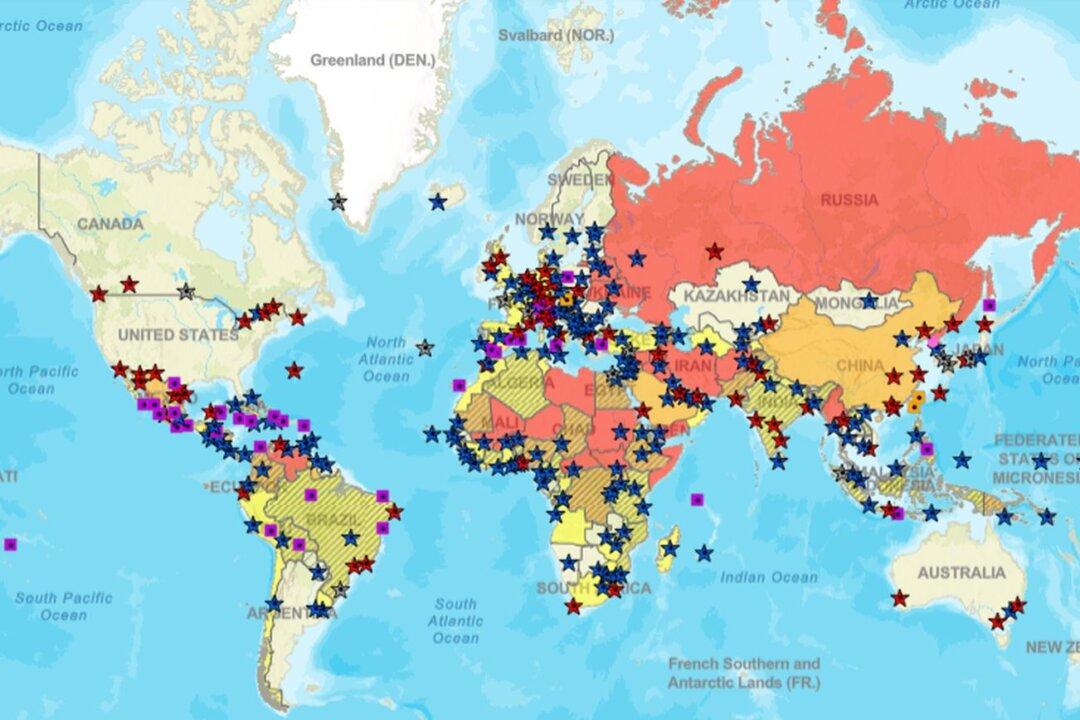The U.S. State Department on Thursday issued another “worldwide caution” alert for American citizens as about 50 percent of countries worldwide are currently deemed to have a heightened risk for travelers.
As of Friday, the agency lists 21 countries as Level 4, meaning “do not travel.” Another 20 are listed as Level 3, or “reconsider travel,” while 70 others were marked as Level 2, or “exercise increased caution.”





